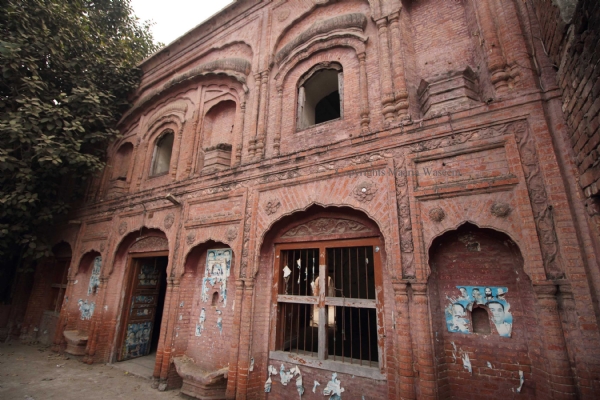Sher-e-Punjab Maharaja Ranjit Singh's ancestral Haveli collapses after Pakistan govt neglects the monument
Sher-e-Punjab Maharaja Ranjit Singh, the first Maharaja of the Sikh Empire, was born in this house on 13 Nov 1780. The haveli holds great significance for Sikhs around the world.
Total Views |
Lahore, Aug 13: Owing to the Pakistan government's continuous negligence of Maharaja Ranjit Singh's ancestral "haveli" in Gujranwala city of Pakistan, the roof of the haveli collapsed on Friday (Aug 12). A portion of the haveli of "Sher-e-Punjab" Maharaja Ranjit Singh, collapsed in spite of the authorities, a few days ago declaring it safe to be converted into a historical tourism site.

The Assistant Commissioner of the district visited the said haveli along with the officials of the concerned department and declared it completely safe. It was announced to be open for tourists, especially for Sikhs from India. Sher-e-Punjab Maharaja Ranjit Singh, the first Maharaja of the Sikh Empire, was born in this house on 13 Nov 1780. The haveli holds great significance for Sikhs around the world.
Also read: #PoK Burning? Massive protests erupt against Pakistan's plans to alter constitutional status
The mansion is shaped as a long rectangle, oriented north-south but canted to the northeast in the prevailing direction of Gujranwala's urban fabric. In the late 18th century it was likely surrounded by more greenery and open space, but today it stands in an extremely crowded environment surrounded by illegally built makeshift dwellings. In a video shared by the locals, the heritage property, which once reflected the wealth and eminence of Ranjit Singh's father, Mahan Singh looks in shambles.
The building has been declared a protected heritage building by the Pakistan Archaeology Department, but the officials rarely visit. The Pakistan govt has over the time allocated funds for the restoration of the haveli, but it was not utilized. There were reports claiming that the govt converted an area of the haveli into a dump yard and the lower floor of which was being used as a police station for long after the partition. Later, the Pakistani government removed the garbage dump but started using the place as a parking area.


